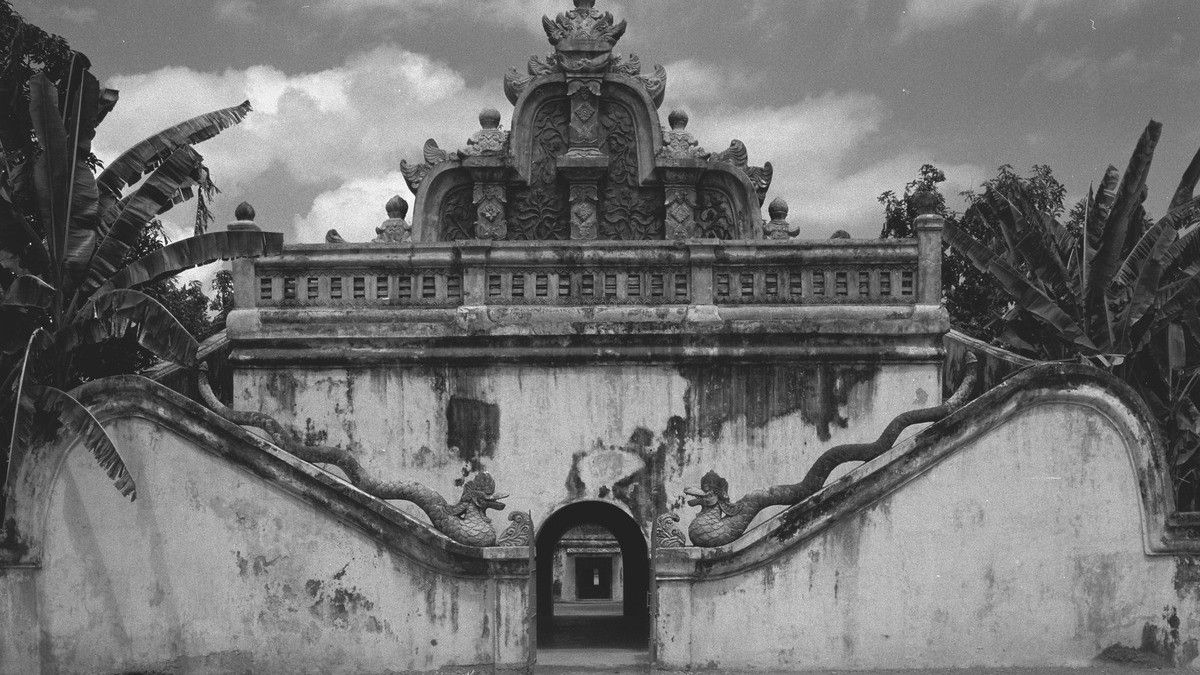JAKARTA - Speaking of interesting tourist destinations, the name Yogyakarta has never lost its charm. The special Yogyakarta is able to provide various colors in tourism, from history, nature, culture, to culinary. And a visit will be incomplete if you don't put the name Taman Sari Water Palace on the list of destinations while you are in Gudeg Country.
Since long time ago, the name Taman Sari has been famous as a favorite tourist destination for world travelers. In fact, the name Taman Sari has been known long before the Republic of Indonesia was founded. As evidence, the tourism agency formed by the Dutch East Indies government named Batavia Vereeniging Toeristenverkeer seems very serious about promoting Taman Sari to the world.
To that end, a travel guidebook entitled Java the Wonderland (1900) was released. Taman Sari is given a large portion of the book. Taman Sari has been described many times as a place that brings beauty and admiration at the same time.
“… With half a florin (English coin) a native boy will show you the way through ruins full of picturesque places, ancient gates, ponds half filled with vegetation, collapsed halls, small underground passages, and canals, and a destroyed tower 17 meters high - called a maze, ”it reads.
That is why the United States traveler, Eliza Ruhamah Scidmore, who visited in the 18th century said that he enjoyed the moment of his visit to Taman Sari. Through the Java book, The Garden of East (1897), he called Taman Sari a paradise garden in the tropics. The tranquility of Taman Sari helps Eliza feel like she has peace of mind.
Even so, Eliza still reminded travelers to be careful when exploring the entire Water Palace, starting from the caves, small passages, tunnels, stairs and porches around the well which began to be slippery and looked a little irregular. This was allegedly because several important parts of the Taman Sari complex had been damaged by an earthquake in 1867.
Interestingly, Eliza did not lose her imagination to imagine the splendor of the Water Palace. “Visiting Taman Sari feels like being in the middle of a lake, which has to be reached only by boat or through a secret tunnel. And this is where the Kings and their wives spend their free time, even as the army is rushing at the gates. "
"For the rest, Taman Sari has one of the most captivating attractions. Namely, when the sun is shining, you can see the romance that seems to survive in the beautiful gardens, caves and galleries. "To the extent that, one can imagine a number of legends and mysteries of the love of the king and his wives in the Water Palace," he added.
History of Taman SariTaman Sari was built around 1758 by order of Sultan Hamengkubuwono I. Referring to various literacies, the construction of Taman Sari was none other than to accommodate the needs of the royal owner for entertainment and shelter when there was a great war.
As stated by Seno Joko Suyono in the article Imagination Around the Water Palace in Tempo Magazine (2006). He said the Taman Sari designer was still a mystery.
"Syahdan, there is a Portuguese ship stranded on Glagah Beach, Yogyakarta. Some of the survivors turned out to be builders. Then, Sultan Hamengkubuwono I asked them to build a compound complex full of secret passages. "
Another opinion was expressed by the former Portuguese Ambassador to Indonesia, Antonio Pinto Da Franca. He said that Taman Sari was actually designed directly by a Portuguese architect who lived in Batavia (Jakarta). At that time, the Sultan, who was interested in Portuguese buildings in Goa, wanted a Portuguese architect to intervene to build his Water Palace.
Equally, it becomes a Water Palace which is known as a place of recreation as well as a unique fortress. Later, the Sultan would also take advantage of Taman Sari's presence to chat, bathe, meditate, as well as a place to think about strategies to preserve power.
“Taman Sari is primarily a guest room where the Sultan can meet his most important guest: Nyi Loro Kidul, Queen of the South Sea. Around it all - the abdi dalem's residence, the inner palace, and Taman Sari - stands a 13 meter high and five kilometer long protective wall, "added the Hannigan Team in Raffles and the Invasion of Java (2012).
Not surprisingly, Ki Sabdacarakatama in the book History of the Yogyakarta Palace (2009), expressed his opinion regarding the truth of the birth of Taman Sari not only about entertainment venues. He said the Water Palace was a place of escape when attacks rained on the Yogyakarta Palace.
This is due to the fact that the owner of the Water Palace is a war strategist. So, naturally, the Sultan needed a shelter equipped with roads that pierced out of town.
“… And equipped with water gates so that if they are closed they can change the state of Taman Sari to become like a large lake, so that everything around Taman Sari is completely destroyed. In such circumstances, if necessary the palace can be vacated by taking a walk in the ground, ”he said.
In line with that, Denys Lombard in the book Taman-di Java (2010), mentions that Taman Sari is not an open space in essence. "Its surface is separated from the outside world, the general world, by a high wall which needs to be crossed by passing through heavily guarded gates."
It was so special that only a limited number of people were allowed to enter Taman Sari in ancient times. And if they entered there, they would live a more vigorous life enjoying the serenity of the Water Palace. "In the end, Taman Sari is a heavenly oasis that the king visited to live his life as a god," concluded Lombard.
The English, Chinese, Japanese, Arabic, and French versions are automatically generated by the AI. So there may still be inaccuracies in translating, please always see Indonesian as our main language. (system supported by DigitalSiber.id)













